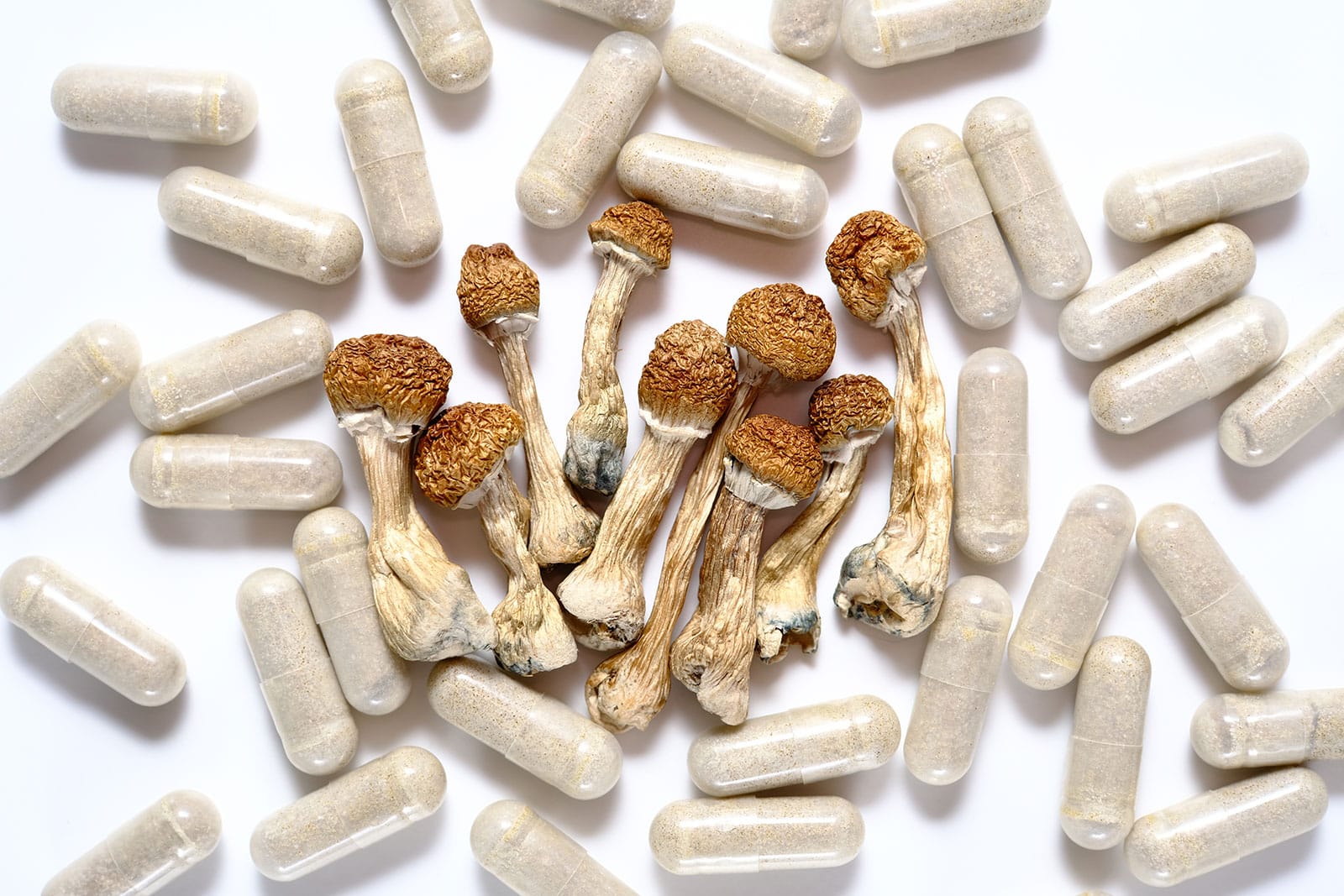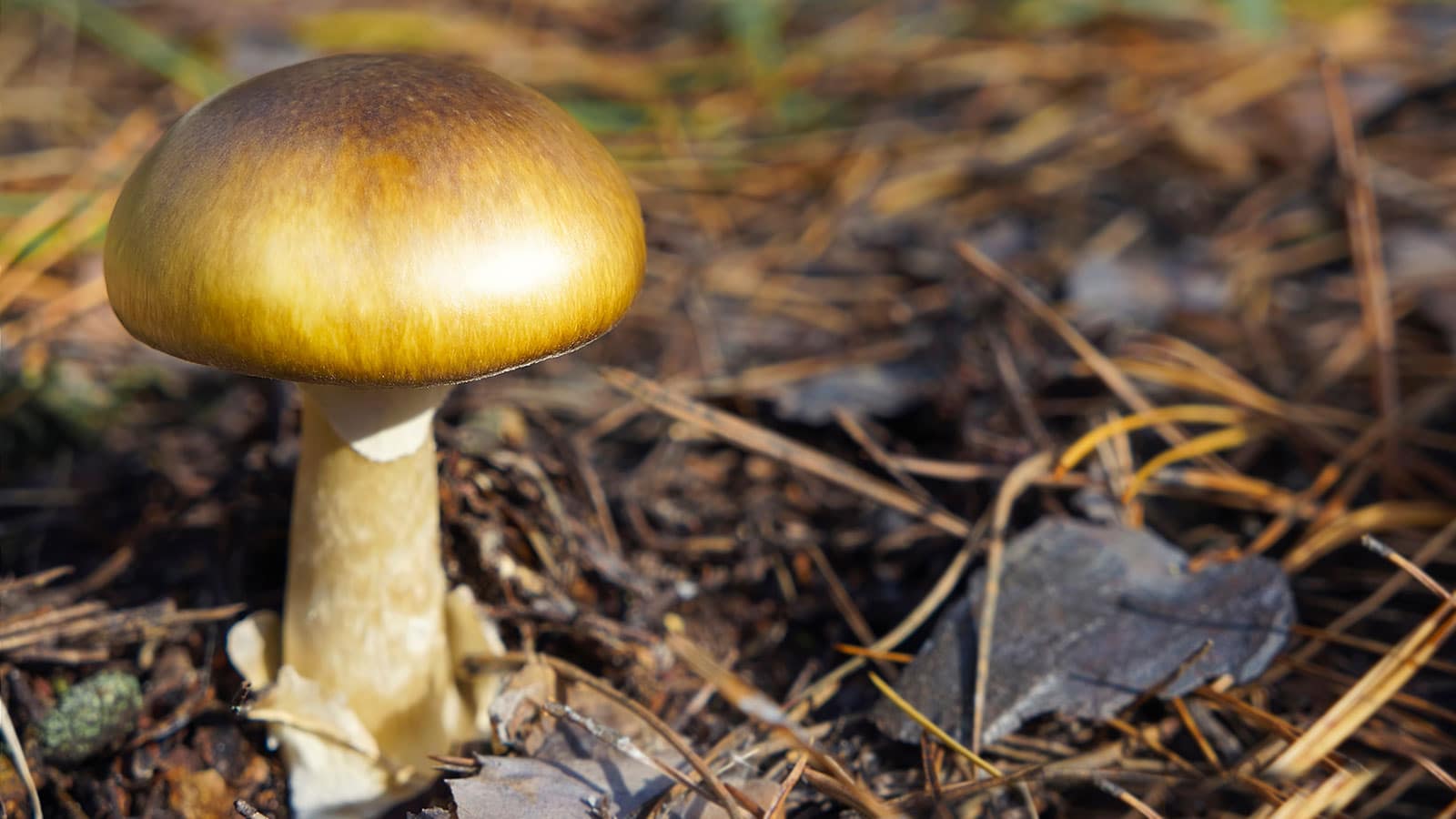It’s one of the most powerful drugs in the world, but you’re more likely to find it in a pasture with cow dung than in a nightclub. Indeed, the gold cap mushroom has developed quite a reputation over the past few centuries. Becoming known as some of the most popular psychedelic “shrooms” in the world, gold cap mushrooms can be singled out in nature due to their caps. As one might imagine due to its name, the color of this fungus is often described as either gold or bronze in tone. Those who consume these mushrooms will often experience intense hallucinations as a result. Because of these psychoactive qualities, gold cap mushrooms have been used as part of shamanic rituals for many centuries now.
Identification and Characteristics of the Gold Cap Mushroom
For much of the Western world, mycologist F.S. Earle’s discovery of Psilocybe cubensis in Cuba was considered a seminal moment. However, many did not realize that the fungus had been hiding in plain sight — all across the world — for a very long time. Some of the places the gold cap mushroom can be found include Brazil, Australia, Zimbabwe, India, and many areas in Southeast Asia.
Although Psilocybe cubensis is most easily recognized by its aforementioned, iconic gold cap, the fungus also boasts many other characteristics that make it interesting. The gold cap mushroom’s gills are often described as grey and thin. As the mushroom continues to mature, the gills have a tendency to darken, but their edges will usually retain a white hue. The stem also tends to be white or yellow in color, and it is shaped like a barrel. Stems will usually measure anywhere from a couple of inches to half a foot in height.
The gold cap mushroom has taken over much of the world, but it does require very specific conditions in which to grow. Specifically, this fungus prefers extremely rich soil. It’s been known to bloom on the dung of water buffaloes, cows, and even horses. Pastureland tends to provide the best conditions, as the gold cap mushroom is saprophytic. This means that it feeds itself by making use of rotting organic matter. A decomposing piece of a tree, for instance, would provide ideal conditions for Psilocybe cubensis to thrive.
The Rich Historical and Cultural Significance of Gold Cap Mushrooms
Although the Oaxacan region of Mexico is now most well-known for its cuisine, many years ago, it was just as popular for its psilocybin mushrooms. Just as people travel to Peru to take part in ayahuasca ceremonies with shamans, they also journey to Huautla de Jiménez to take psychedelic mushrooms. Located in the Sierra Mazateca area, this town has played host to many seekers throughout the years. The Aztecs, who are perhaps a bit more well-known to modern audiences, also used Psilocybe cubensis to ask the gods for divine guidance. In Mexico City, there is a National Museum of Anthropology where one can see a beautiful statue of the god Xochipilli. The manner of the statue’s sitting — and his ecstatic expression — seems to suggest that Xochipilli is under the influence of magic mushrooms.
Unfortunately, it is difficult to find accurate historical records of the ceremonies held by Aztec and Mazateca elders. Many of the stories about these ceremonies — that have been handed down — had been recorded by Spanish priests, who often had their own agenda or saw the ceremonies through their own filters. One such example is the testimony of Francisco Hernández de Toledo, a doctor well-regarded in the Spanish court. In 1656, he felt compelled to release a primer to missionaries headed to the New World. Some of his “tips” included descriptions of ceremonies in which Psilocybe cubensis would cause “madness” and compel its users to see visions of war and other atrocities. It’s not difficult to see why current shamans do not share the oral history of these ceremonies with the outside world, instead choosing to preserve the traditions within the culture.

The Pychoactive Components at Play
As the two psychoactive compounds in gold cap mushrooms, psilocybin and psilocin are both classified as controlled substances in many countries. Although both components play a role, psilocin is considered the substance chiefly responsible for the euphoria that users feel. When psilocybin interacts with humans’ digestive tracts, it is broken down in a way that strips away much of its power. If someone were to consume psilocybin in a way that did not involve the digestion process, it would be just as potent as psilocin.
This Is Your Brain on Psilocybin
When someone first ingests psilocybin, it makes its debut into the brain by using the same receptors as serotonin. Within 30 minutes, different areas of the brain will start to communicate with each other in new and novel ways. Meanwhile, those parts of the brain that are accustomed to working together may take a break from doing so. Usually, there are barriers between the senses. But when this compound starts working on the brain, these lines become blurred. Suddenly, the sense of self and the visual awareness may become mixed up in a way that causes altered states. Essentially, psilocybin jumbles up signals in the brain, leading people to make new connections and disrupt their regular patterns.
A Mushroom Trip
It takes about 30 minutes for gold cap mushrooms to begin taking hold in some people, while it takes about two hours for others to start feeling high. Many people note a feeling of nausea and maybe some sweatiness. After this initial discomfort passes, people will often start to notice that the colors in the room may become brighter than usual. It’s not uncommon for individuals to burst into giggles at this point. For most, this is when the trip will take hold. Their sense of time will be distorted, and they may find themselves ruminating on certain parts of their life or just enjoying the journey.
This “peak” part of the journey will usually last about two hours after the shrooms are consumed. It’s important to note that the effects are highly personal. Factors such as the amount of mushrooms ingested — and the individual’s metabolic rate — will come into play. What works for one person may not affect their friend in the same way. Unlike the harsh comedown that can occur after using hard drugs, coming down from gold cap mushrooms tends to be a gentle experience. About three to four hours after consuming the psilocybin mushrooms, most people will return to their normal state.
As with any drug, each trip will vary from person to person. In the case of shrooms, the initial nausea that one may feel tends to pass rather quickly. If someone starts to feel anxiety while shrooming, they are encouraged to listen to calming music or to relax with a friend who is designated to care for them during their trip. These people are often referred to as guides. The most common reason for bad trips is consuming too many mushrooms, so people are advised to dose carefully. If someone has eaten a big dinner before consuming shrooms, for example, they may begin to grow impatient for their trip to begin because the onset is bound to take longer. In these situations, patience is of paramount importance.
Therapeutic Applications
These days, the scientific world is abuzz with chatter about the ways in which psilocybin mushrooms may be employed to help treat people suffering from a whole host of maladies. For those dealing with the toxic pull of substance abuse, a mushroom trip may reveal a new perspective and shed light on how the person’s addiction is affecting them. Neuroplasticity may offer patients a way to interrupt their patterns and start something new. There have also been some studies on the use of psilocybin mushrooms for depression. Researchers have seen the way shrooms interact with the brain’s serotonin receptors, leading them to believe that there may be some situations in which these fungi could take the place of SSRIs for some patients. For those suffering from PTSD, psilocybin mushrooms may present them with a more gentle way of processing their trauma and actually moving on from it. It’s important to note that there need to be many more studies before these treatments will be approved for a clinical setting.
Legal Issues
Although gold cap mushrooms are gathering ground in medical studies, this does not mean that they have been legalized in any way. In Oregon, they have been approved for therapeutic use, but most other states see magic mushrooms as a Schedule 1 drug. Those who are traveling abroad need to be even more aware of the laws of the land. Thailand, for instance, only recently got rid of automatic death sentences for those who are smuggling drugs, including mushrooms. Those caught with large amounts of shrooms these days can still catch a prison sentence of up to 15 years, however. Even those who are caught simply consuming a drug may have to serve prison time. Again, one cannot be too cautious about using mushrooms when traveling.
Guidelines
It is crucial for people to know themselves — and their own limits — before experimenting with shrooms. Research is the best course of action. For example, those who have a family history of schizophrenia may want to avoid psilocybin mushrooms altogether. Someone’s “set” is their mental state before tripping. Starting off in an anxious or worried state is not a good idea. “Setting” refers to the environment in which someone is going to consume mushrooms. Those who are doing shrooms for the first time are encouraged to do so in a setting that is familiar and relaxing to them. Taking shrooms at a big, loud party, for example, is not advisable.
Working with a “guide”, however, is a very good strategy. This is a sober person who will monitor the first-time user for six to eight hours and who is aware of exactly what they’ve taken. The guide will keep fresh water and a first-aid kit on hand, just in case. The hope is that everyone has a positive experience that they can learn from. Even if someone has an amazing trip, it is crucial to practice moderation in the future. All substances, including shrooms, can become addictive if someone is not using them properly. For those who find themselves starting to rely on shrooms too much, though, there is help available. The team at Live Free Recovery Services is excellent at helping people get rid of their addictions and live their best lives.
References
National Library of Medicine
National Institutes of Health
Nature Journal
Scientific American
U.S. Forest Service
NIH


